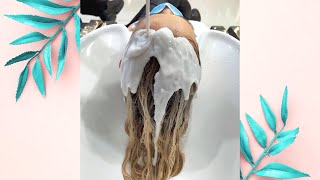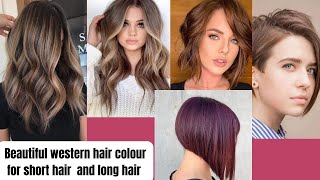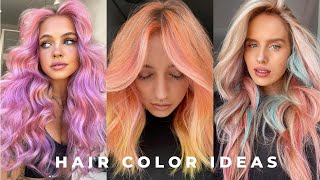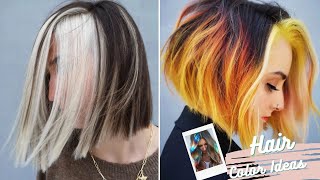Structure Of Hair Follicle - Hair Color - How Does Hair Growth Work
- Posted on 26 March, 2018
- Hair Knowledge
- By Anonymous
In this video we discuss the structure of hair, how does hair grow and how does hair color work? We also look at the function of the sebaceous gland and the function of the arrector pili muscle.
Transcript/notes
Hair structure, hair color and hair growth.
Hair consists of 3 main sections, the hair bulb, the hair root and the hair shaft. The hair shaft is the top portion of the hair that extends out from the surface of the skin. The hair root extends from the bulb to the surface of the skin, and the bulb extends from the root deeper into the dermal layer of the skin.
The hair follicle is the sac or tube that surrounds the hair root and extends into the dermis and it consists of an outer connective tissue sheath that originates from the dermis and an external epithelial root sheath and an internal epithelial root sheath.
At the bottom of the follicle in the hair bulb is the germinal matrix which consists of epithelial cells. Protruding into the germinal matrix is the hair papilla which is composed of connective tissue and houses nerves and blood vessels that nourish the germinal matrix. Melanocyte cells are located in the germinal matrix, and they produce the pigment that gives hair its color.
The hair blade consists of 3 sections, the medulla, located in the middle, the cortex and the cuticle.
A sebaceous gland is located here, and an arrector pili muscle is located here. We will cover these in a minute.
Hair is formed by cells in the germinal matrix which undergo mitosis, or cell division, and move upwards in the follicle and become keratinized. Keratinized cells being cells that were once alive, but filled with the keratin protein as they matured, causing them to lose their organelles and die.
Hair on the scalp typically grows about a ½ inch per month or 5 inches per year with body hair growing more slowly. Scalp hair can live between 2 and 6 years, then die and are replaced by new hairs. As we age hair may thin, or baldness can develop with heredity being the main cause.
Hair color is determined by the melanocyte cells mentioned earlier. Melanocytes release the pigment melanin which enters into the keratinized cells and gives the hair its color. There are 2 types of pigments that are released, a dark eumelanin and a lighter pheomelanin, which blend to form a wide range of colors. Hormonal and environmental factors can contribute to hair color as well. As we age, melanin production decreases which makes hair appear grey and eventually melanin production completely stops producing white hair.
The sebaceous gland mentioned earlier secretes an oily substance called sebum which lubricates and conditions hair and skin preventing it from becoming dry, brittle or easily damaged. And the arrector pili muscle is activated as a response to an emotional state or cold temperatures. It pulls the hair follicle, elevating the hair, producing goose bumps.
Timestamps
0:00 The 3 main sections of hair
0:21 The hair follicle
1:11 How hair is formed
1:27 Hair growth over time
1:45 Hair color
Hair structure, hair, color and hair growth. Hair consists of three main sections: the hair bulb the hair root and the hair shaft.. The hair shaft is the top portion of the hair that extends out from the surface of the skin. The hair root extends from the bulb to the surface of the skin and the bulb extends from the root deeper into the dermal layer of the skin.. The hair follicle is a sac or tube that surrounds the hair root and extends into the dermis, and it consists of an outer connective tissue sheath that originates from the dermis and an external epithelial root sheath and an internal epithelial root sheath. At the bottom of the Follicle in the hair bulb is the germinal matrix, which consists of epithelial cells. Protruding into the germinal matrix is the hair papilla, which is composed of connective tissue and houses, nerves and blood vessels that nourish the germinal matrix. Melanocytes cells are also located in the germinal matrix And they produce the pigment that gives hair its color.. The hair blade consists of three sections: the medulla located in the middle, the cortex and the cuticle.. A sebaceous gland is located here and an erector pili muscle is located here.. We will cover these in a minute. Hair is formed by cells in the germinal matrix, which undergo mitosis or cell division, and move upwards in the follicle and become keratinized. Keratinized cells being cells that were once alive but filled with the keratin protein as they matured causing Them to lose their organelles and dye. Hair on the scalp typically grows about a half-inch per month or five inches per year with body hair. Growing, more slowly., Scalp hair can live between two and six years then die and are replaced by new hairs.. As we age, hair may thin or baldness can develop, with heredity being the main cause. Hair color is determined by the melanocytes cells mentioned earlier. Melanocytes release the pigment melanin which enters into the keratinized cells and gives the hair its color.. There are two types of pigments that are released: a dark eumelanin and a lighter pheomelanin, which blend to form a wide range of colors.. Hormonal and environmental factors can contribute to hair color as well. And as we age melanin, production decreases, which makes hair appear gray and eventually melanin production completely stops producing white hair.. The sebaceous gland mentioned earlier secretes an oily substance called sebum, which lubricates and conditions hair and skin, preventing it from becoming dry brittle or easily damaged., And the erector pili muscle is activated as a response to an emotional state or cold temperatures.. It pulls on the hair. Follicle, elevating the hair producing goosebumps. And that be the basics on hair structure, hair color and hair growth.





Comments
Jay Pible: ive literally been searching for almost an hour on a hair crash course and with nothing gained until i found this video and now im good to go! definitely subbed!
Lexi Bardo - Porter: A good briefing, thanks, I sent on the link to my classmates as part of our hair structure revision at college.
Brendan: Man this channel is going to blow up! Great content!!
D N: Fantastic, thank you!
Anmol Batra: Very helpful video
Paul Pan: Great content! Next do one that discusses the formation of fue hair surgery
Daniel Rodrigues: really summed up well! thank u
황유상: man i'm from korea, this vid is really helpful for understanding our body . thank you
Surbhi수르비: Thank you today my friends in my school told that I have one gray hair
UHFStation1: Do all hair cell types in bulb get good blood flow, and is senescence the primary cause of hair graying?
ImTrash net: keep uploading my dude!!!
Lil Kamikaze: ANTOHER GREAT HELPFUL VIDEO!!!
RockingGirl06: AWESOMEE thanks!!
112 Vruddhi Parab: Thanks!
mandi’s luminals ♪: amazinggggg i need this to make my subliminal lmao
jiim boom bhaa: Doctor, please help me with your answer, my hair fall with white particle at the end of the hair what is that?
APVHZ 020: So you’re telling me every hair has a muscle?
Danny Phantom: Wait but what’s the 2 main parts of the hair
Gilla Andrea Sardon: Thanks dude
Nazreen Parvin: Great
Alimut Alimut: தமிழன்டா ❤️
commander Shepard's dong: Gross lmfao